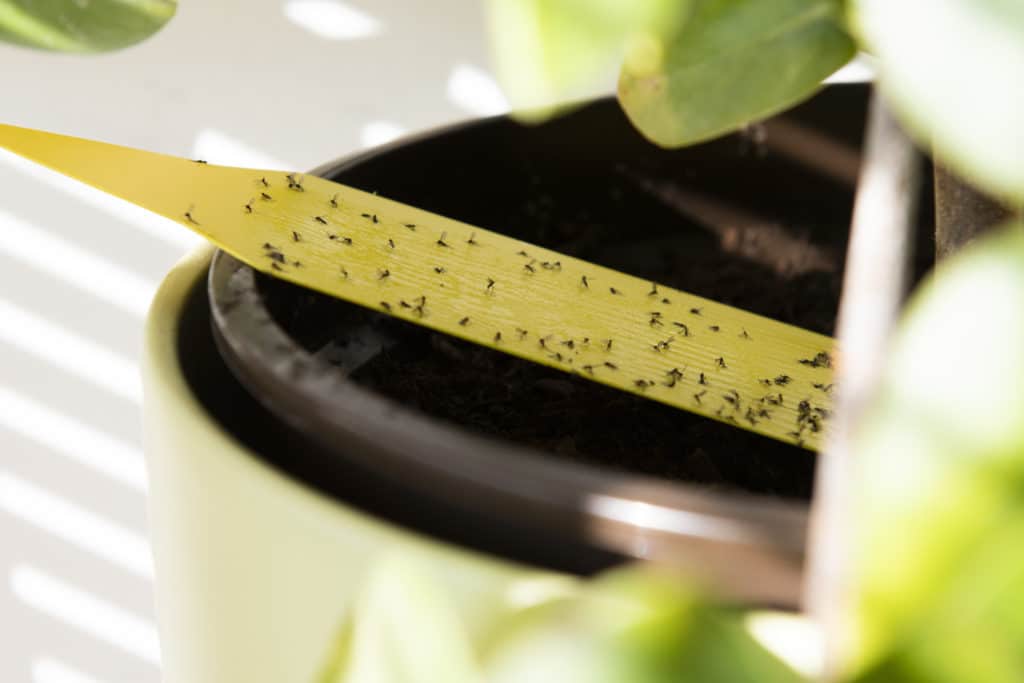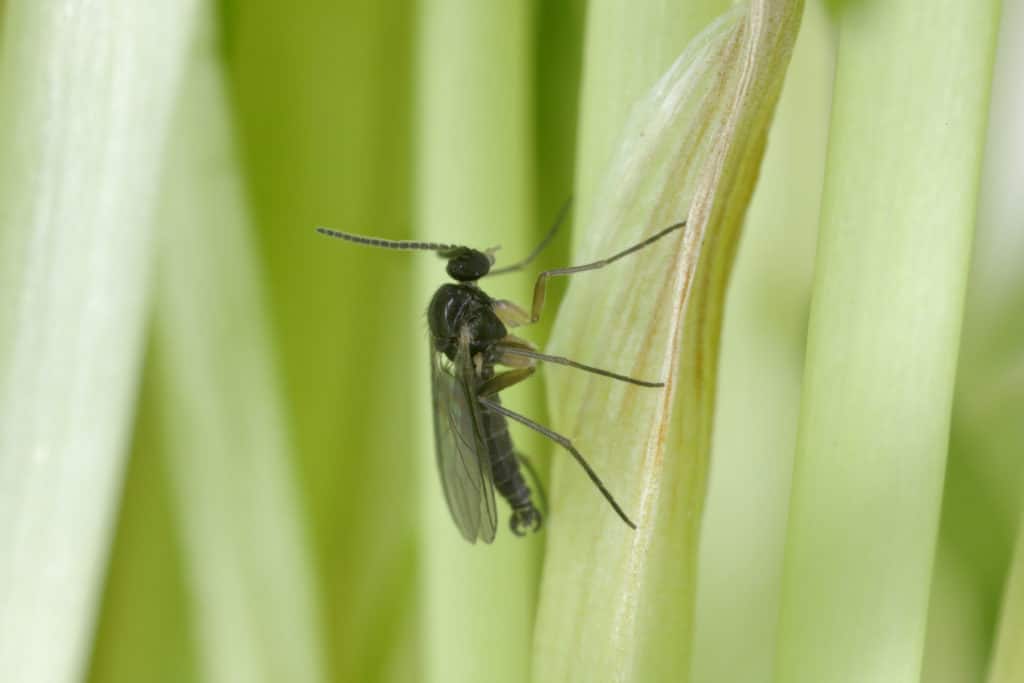
Many houseplants are attacked by soil gnats. These black bugs come in small sizes and gnaw at the roots of plants, leading to stunted growth or even death.
Gnats can be a problem for indoor plants because they thrive on wet soil that takes longer to dry out than outdoor soil. If you notice gnats around your houseplants, there’s no need to panic-we’ll walk you through how to get rid of fungus gnats indoors!
What are fungus gnats??
Fungus gnats are small, black flying insect that is attracted to wet potting soil. They typically affect indoor plants because the soil takes longer to dry out and many people overwater their plants by mistake. You can often see fungus gnats buzzing around your houseplants or hovering near the top of the soil.
The eggs of the gnats are laid in damp soil, most often the top layer. Each female can lay up to 200 eggs at once! The larvae develop inside the eggs, which hatch and transform into fungus gnats.
The term “fungus gnat” refers to these creatures, which feed on the fungal growth produced by wet soil (hence the name). When you detect them zipping about, they are at their adult stage. After that phase is completed, the cycle repeats itself.
How do I identify a fungus gnat?
The easiest way to identify a fungus gnat is by its size. These little bugs measure about a millimeter in length and have long legs. Adults are black with clear wings while larvae appear white or grey.

What does a fungus gnat look like?
Fungus gnats come in small sizes and gnaw at the roots of plants, leading to stunted growth or even death. These little bugs measure about a millimeter in length and have long legs. They’re typically attracted to wet potting soil that takes longer to dry out than outdoor soil – that’s where they thrive!
The easiest way to identify them is by their size: adult fungus gnats are often completely black but may also be brownish-grey, while immature gnats tend towards creamy white with darker markings along the sides of their bodies.
Are fungus gnats dangerous?
Fungus gnats are not typically considered a huge threat to plants-they don’t cause any serious damage to mature plants and they’re unlikely to spread plant disease. However, fungus gnat larvae can kill very young seedlings because they gnaw at their tender roots and stunt growth and development. This is particularly problematic in hydroponic gardens where fungicides cannot be used on crops like lettuces that require soil-free conditions.
How to Prevent Fungus Gnats
The best way to prevent gnats from invading your home is by keeping the moist soil in your houseplants dry.
If you notice pesky gnats buzzing around your houseplants, try giving them a water break to allow the top two inches of soil to dry out – most gnats are attracted to wet soil!
If that doesn’t work, you may need to repot your houseplant in a new potting mix.
There are other things that can be done if you’re noticing an uptick in gnat activity:
- Reduce humidity levels inside to discourage adult gnat breeding success – eliminate standing water sources like saucers under pots and trays with pebbles or gravel filled up halfway with water.
- Add Diatomaceous Earth to your soil mix. It is a desiccant that will kill gnat larvae and eggs.
- Introduce predatory nematodes to your potting mix, which are natural enemies of gnats – these can be found at most garden stores.
- Apply insecticides such as pyrethrin or malathion directly to the soil surface where the gnats and larvae are congregating.
How to Get Rid of Gnats in Houseplants
To prevent a fungus gnat infestation, you should allow your houseplants’ soil to dry out between waterings and avoid overwatering plants.
If gnats have already attacked a plant indoors, it’s important not to give up on the plant. Gnats can be wiped away with a cotton swab dipped in rubbing alcohol or they can be drowned by pouring boiling water over their larvae habitat.
It may take time for gnat-ravaged plants to recover from an attack – even if they don’t show signs of improvement right away, keep watering sparingly and encourage the potting mix to dry out as much as possible until new growth is healthy again!
In order to prevent gnats from breeding, you can also try to decrease the moisture level in the air by using a dehumidifier or increasing air circulation with fans.
If all else fails, there are chemical insecticides available that will kill gnat larvae and eggs. Just be sure to read the label carefully and follow all instructions for use.
To summarize, here is how to get rid of gnats in plants:
- Allow plants’ soil to dry out between waterings
- Avoid overwatering plants
- Wipe gnats away with rubbing alcohol or drown them with boiling water
- Decrease moisture level in the air with a dehumidifier or increase air circulation with fans
- Use insecticide if necessary, but read the label carefully first!
Sticky Traps
One foolproof way we’ve found for controlling fungus gnats without using harsh chemicals is yellow sticky traps that catch gnats on a glue board inside a plastic casing.
The adult gnats are attracted by the yellow color and die when they touch it. We love these things because there isn’t any sort of chemical involved – just an easy clean-up at the end with no mess or fuss.
Other Ways to Prevent Fungus Gnats
In the fall, fungus gnats are more apparent. It’s possible that they travel on plants when they’re brought inside at the conclusion of the summer.
Check your plants to be sure no insects have hitchhiked aboard. When planting or repotting in a sterile potting mixture, make sure you do it correctly.
Try Using an Indoor Fly Catcher
An indoor flycatcher is a good alternative to gnat repellents. They don’t rely on insecticides or chemicals but instead trap gnats using ultraviolet light and a low-voltage electric grid that attract the gnats then kills them with an electric shock.
Traps that use attract and suck mechanisms are known as ‘humming’ or ‘vibrating’ traps. These traps are generally USB-powered and utilize a combination of LED lights and fans to entice and capture flies.
We strongly recommend the KATCHY Automatic Indoor Insect and Flying Bugs Trap from Amazon.
The Final Straw – Hiring Pest Control Services
If fungus gnats have become a serious problem and you’re faced with a fungus gnat infestation despite all your best efforts, it may be time to call in the professionals. The gnats are very persistent and can quickly return if not fully eradicated by whatever measures you try.
